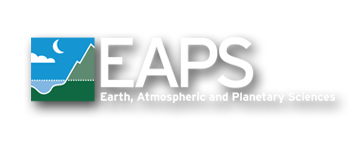PAOC Colloquium – Christopher Wolfe (Stony Brook)
Effect of Zonal Asymmetry on Global Climate and Tropical Variability in an Idealized Coupled Climate Model
In a series of pioneering studies, Marshall and colleagues examined the effect of oceanic continental boundaries on global climate using idealized coupled configurations of the MIT general circulation model. They showed that a climate lacking oceanic zonal boundaries (an aquaplanet configuration referred to as “Aqua”) correctly represents the tropical overturning circulation (i.e., the Hadley circulation) and the partition of atmospheric and oceanic heat transport in the topics but oceanic heat transport in the extra-tropics is weak, leading to the formation of large polar caps of sea ice. Adding a simple pole-to-pole ridge of land to create the “Ridge” configuration allows gyres to contribute to poleward heat transport in the extra-tropics, leading to a retreat of the polar sea ice caps.
In this talk, we revisit these foundational results using the Community Earth System Model (CESM)—a “CMIP-class” coupled climate model—and with a focus on tropical circulation and variability. These CESM configurations have higher resolution and more complete atmospheric physics than previous idealized coupled climate models as well as numerous model-dependent differences. These differences lead to features of the climate that are previously unreported or different from those reported. One of the most dramatic features of our Aqua configuration is the presence of a global equatorial cold belt driven by equatorial upwelling. The cold belt leads to subsidence rather than lofting of air over the equator and an atmospheric overturning circulation in the opposite sense as the standard Hadley circulation within a few degrees of the equator. In contrast, our Ridge configuration has an oceanic warm pool and eastern cold tongue instead of a global cold belt and the reverse Hadley circulation seen in Aqua is suppressed. Instead, a Walker circulation connects the warm pole and cold tongue, reinforcing the mean state in a Bjerknes feedback. Consistently, Ridge supports an ENSO-like mode of interannual variability characterized intermittent weakening of the Walker circulation and warming of the eastern tropical ocean. Surprisingly, Aqua also supports an interannual mode of tropical variability characterized by warming and cooling of the cold belt coupled to fluctuations in the strength of the trade winds. In both cases, the tropical interannual variability is driven by a classical Bjerknes feedback between sea surface temperature and wind anomalies.
About this series:
The PAOC Colloquium is a weekly interdisciplinary seminar series that brings together the whole PAOC community. Seminar topics include all research concerning the physics, chemistry, and biology of the atmospheres, oceans and climate, but also talks about e.g. societal impacts of climatic processes. The seminars take place on Monday from 12-1pm. Contact paoc-colloquium-comm@mit.edu for more information and Zoom password.



